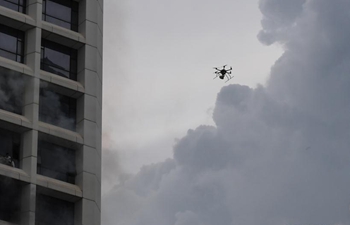WASHINGTON, July 29 (Xinhua) -- U.S. researchers have successfully genetically altered mice with enhanced manual dexterity that grab and eat food much faster than wild ones in a breakthrough they hope could someday help treat patients with motor disabilities.
In a study published this week in the U.S. journal Science, researchers at Cincinnati Children's Hospital Medical Center reported that the brain-to-limb nerve connections that endow humans with great hand dexterity are also present in mice at birth, but are suppressed shortly afterward.
A protein called PlexA1 is to blame, according to the study led by Yutaka Yoshida of the Division of Developmental Biology at Cincinnati Children's.
Genetically altered mice lacking PlexA1 in corticospinal neurons develop and maintain the so-called cortico-motoneuronal (CM) connections into adulthood, it found.
In a test examining whether CM connections affect hand dexterity, PlexA1 mutant mice were found significantly more skilled and faster than normal mice at grabbing and eating food.
In early human development, expression of PlexA1 is weak in the layer of the brain responsible for the nerve connections, the researchers said, but not in mice during the equivalent period of postnatal growth.
"In this paper, we uncover the developmental, cellular, and molecular pathways that give rise to CM connections, and show the impact of CM connections on hand dexterity," first author Zirong Gu, postdoctoral research scientist at Columbia University, told Xinhua.
"This data represents a major breakthrough in our understanding of how species-specific corticospinal circuits develop in different mammals," said Gu, who conducted the study as part of his Ph.D. thesis dissertation work in Yoshida's lab, referring to a network essential for the execution of skilled movements in all mammals.
"It is our hope that it will facilitate the development of future therapies to treat children struggling with fine motor deficits," he added.
Yoshida noted more research is needed to explore the evolution of the mammalian corticospinal system that leads to greater fine motor control in higher primates including people.
"It's possible that some patients with motor disabilities have upregulated expression of PlexA1 or activated PlexA1 signaling that diminish cortico-motor-neuron connections and fine motor skills," Yoshida said in a statement. "Inhibition of PlexA1 signaling during childhood might be a way to restore these skills."

















